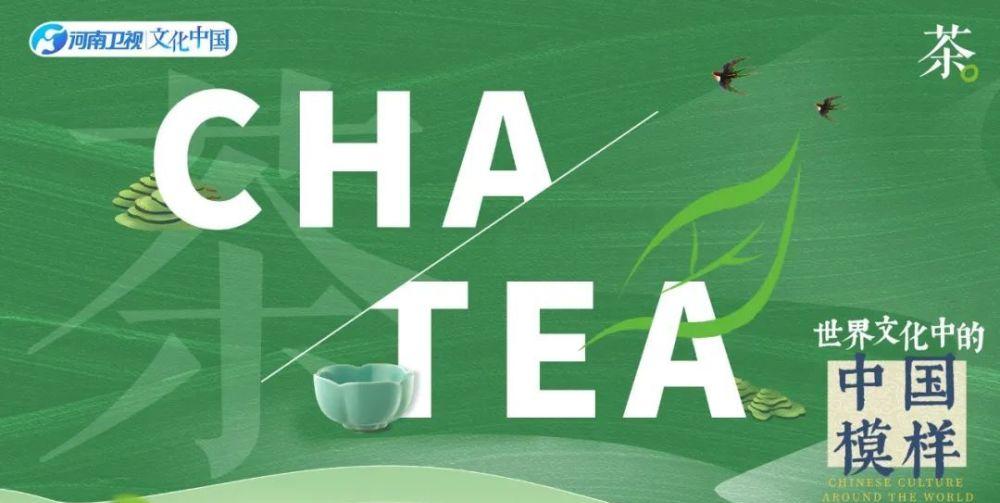
"Socrates and Confucius are two masks of humanity, and under the mask is the same face of human reason."
The great writer of Greek literature Kazantzakis said that the origin of human life is common, and the ultimate ideal is also common.
The meeting of China and the West is the collision of two civilizations.
Zhu Xiaofeng丨 Text
What kind of fascinating expression does China show in the world's view? David He's weekend special planning - the appearance of China in world culture, from Qinqi, calligraphy, painting, poetry and tea, let's slowly uncover the answer together.
Spring is thick, grass grows and warblers fly; Floating like a dream, for joy? Today let's talk about Chinese tea, which is popular all over the world.
01
Tea Cha
Stay until February and March of the spring breeze,
Shi Feng knocked on the fire to try the new tea.
Do not lose the spring light, and drink spring tea.
From ancient times to tea to "Shennong tastes hundred herbs", from "southern good wood" to "always good tea like a beautiful person", a small green leaf has bred a profound cultural heritage.
The English name of tea is tea, but did you know what? There are currently more than 5,000 languages in the world, yet among the many languages, the pronunciation of tea shows a striking consistency.
With the exception of a few regions, there are actually only two broad readings of tea in the world.
One is similar to the English word tea, such as té in Spanish and tee in Afrikaans. The other is that cha is pronounced similarly, such as chay in Hindi and чай in Russian.
So what's the problem? Why does tea have two pronunciations?
This also has to be mentioned with the relationship between the Silk Road and tea, the Han Dynasty is the earliest recorded dynasty of tea, as early as more than 2,000 years ago there was tea trade, which is also the era when the Silk Road began to appear and gradually flourished.
In northern China, tea is referred to as "cha" in most regions, so tea transported from the overland Silk Road is pronounced "cha" almost everywhere it goes.
This mysterious leaf from China, which traveled through Central Asia, eventually became "chay" in Persian and "чай" in Russian, and it even spread to sub-Saharan Africa, known as chai in Swahili.
In addition to the countries along the overland Silk Roads, some countries in East Asia also pronounced tea as "cha", so the term "cha" in Japanese and Korean is also based on cha.
In Japanese, the kanji "cha" is used directly, and green tea is called matcha (matcha); In Korean, cha is written "차", pronounced "cha"; Therefore, the word tea may have appeared in Japanese and Korean longer than Persian and Russian.
02
Tea Tea
So where does the other pronunciation of tea "Tea" come from? The answer is southern China.
Driven by maritime trade, Chinese tea, which was previously only transported to Europe via the Silk Road, had a new transportation route, that is, the Maritime Silk Road.
Tea was crossed to Europe on Westerner sailboats, and the pronunciation of this coastal dialect was brought to Europe.
The first to pronounce tea as "Tee" were the seafaring Dutch, who in the 17th century were the main tea merchants between Europe and Asia. The main ports used by the Dutch in East Asia are Fujian and Taiwan, where tea is pronounced tee (Hokkien), and today's bak kut tea in Nanyang is called bak kut tee.
So through the trade of the Maritime Silk Road, there is now thé in French, Tee in German and Tea in English.
03
Chinese tea
Through the two pronunciations of "tea", we seem to see that thousands of years ago, through the two Silk Roads, a cup of fragrant tea evoked a bridge of cultural exchanges between the East and the West, and also brought Chinese culture along the green tea leaves to the wider world.
Lu Yu's "Classic of Tea" recorded: "Tea is drinking, from the Shennong clan, smelled by Lu Zhougong." Later, it spread more and more, and gradually formed a custom, and in the Tang Dynasty, the style of drinking tea prevailed.
Sleeps heavily by wine Mo,
Gambling books are poured with tea.
Since ancient times, Chinese has had the custom of planting tea, picking tea, making tea and drinking tea.
Tea drinking and tea tasting run through people's daily lives. Sui and Tang Dynasty brewed tea, Tang Dynasty sencha, Song Dynasty tea, Yuan and Ming after brewing tea...
In the mainland, the long history of tea cultivation, tea making, tea drinking and tea customs has become a cultural river with developed branches, abundant water and twinkling stars.
A leaf wades through mountains and rivers, crosses the sea, and a new world opens, that is Chinese tea.
But in addition to the daily function of tea, Chinese tea also conveys the concept of moisturizing and inclusive, and the word "tea" alone is infinitely zen: people in the grass and trees.
Tea is the perfect realm of the unity of heaven and man, and also tells people: life is like tea, and only after experiencing suffering can you taste sweetness! Fame and ups and downs, honor and disgrace and coldness, bitter happiness are born from the heart, and tea tasting is to taste life!
Executive Producer | Xu Na Kong Kangkang Editor-in-Chief | Tomeifang Editor丨Li Yingxin